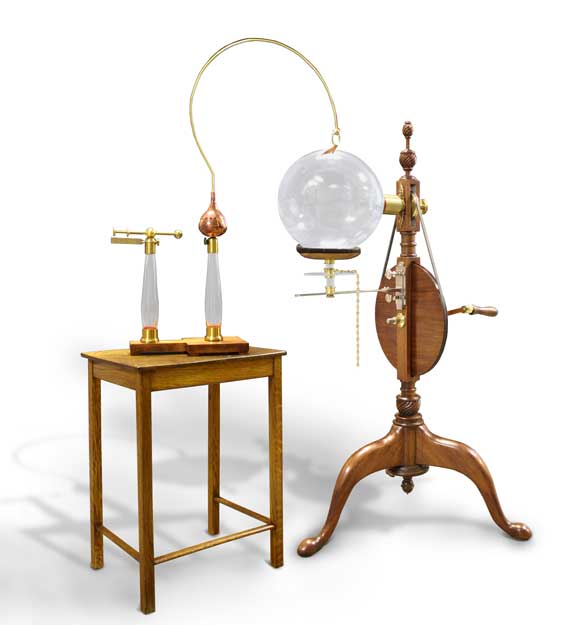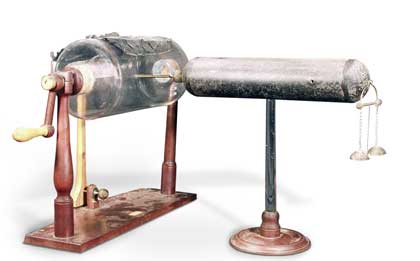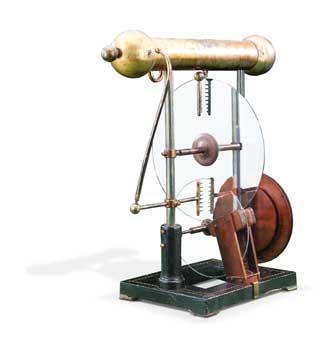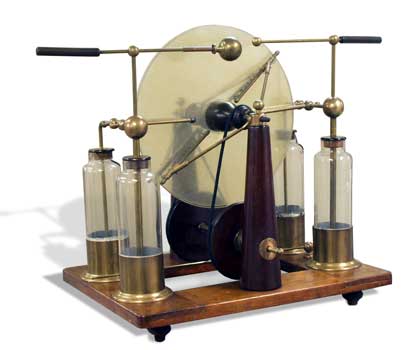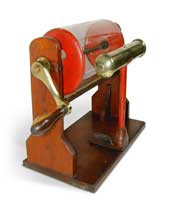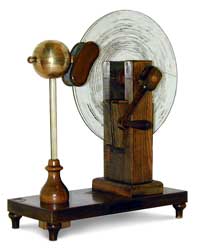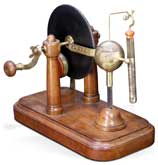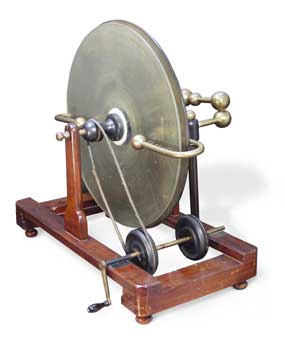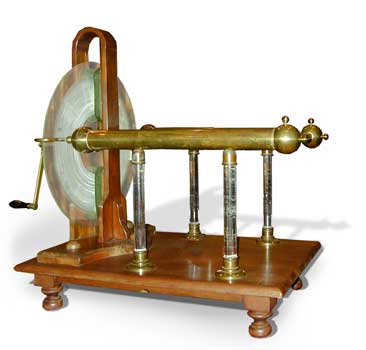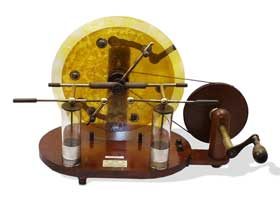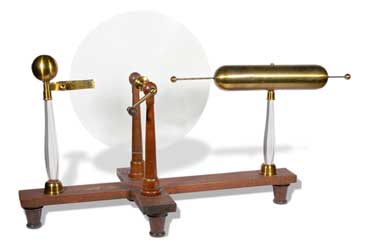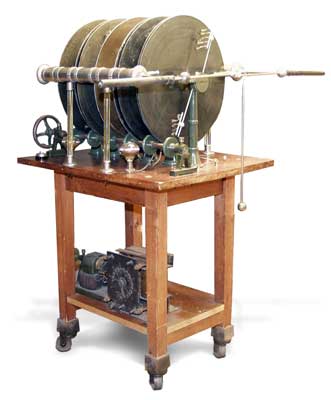|
|
|
|
|
Electric
Machines
(Electrostatic
Electricity Generators)
|
An electric machine consists of the combination of two materials, which when rubbed together produce static electricity, and of a third material or object which acts as a collector for the charges. The first devices for producing electricity were very simple. The ancient Greeks discovered the strange effects of amber rubbed with fur and other material. In the 17th century, scientists used sticks of resin or sealing wax, glass tubes and other objects. By the time of Benjamin Franklin (Franklin became interested in electricity about 1745) large glass tubes about three feet long and from an inch to an inch and a half in diameter were popular; these were rubbed either with a dry hand or with brown paper dried at the fire. There are two major categories of electrical machines: Friction and Influence. A friction machine generates static electricity by direct physical contact; the glass sphere, cylinder or plate is rubbed by a pad as it passes by. Influence machines, on the other hand, have no physical contact. The charge is produced by inductance, usually between two or more glass plates. All through the 18th and 19th centuries there was tremendous interest in electricity. Scientists such as Franklin, Nollet, Coulomb, Volta, Oersted, Ampère, Ohm, Faraday, Joule and others made major advances. Prior to Faraday's invention of the induction coil in 1831 however, the only way to generate high voltage electricity was via a static generator such as these. Rotating the wheel created a static charge, which was available on the "prime collector" (the brass ball or cylinder at the top or front of the device). The charge could then be stored in a Leyden jar or measured by an electroscope.
History of the Electrical Machine Below are some examples of the electrical machines in my collection:
|
|
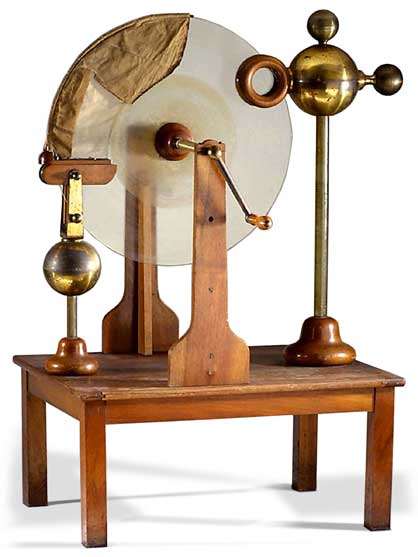 Winter Friction Machine c. 1900 |
|
Carre Induction Machine
|
|
|
Early
Influence Machine
This impressive apparatus stands over five feet tall and contains ten 32" disks. The Bonetti device and others like it were used for medical therapy and to power early x-ray tubes. |
|
|
|
|
|
